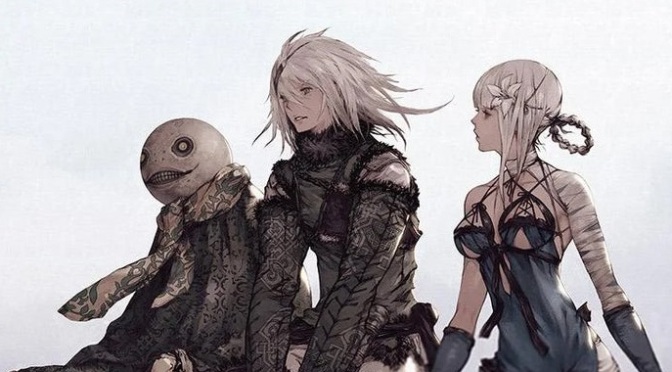There are many links between Nier games and here we take a look at some of the similarities in the franchise.
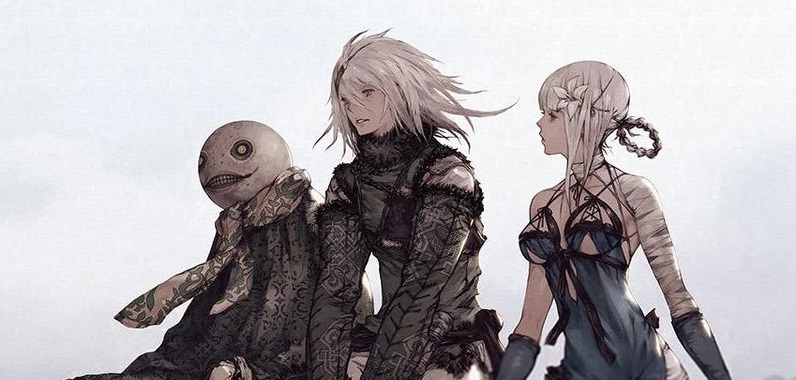
With Nier Replicant only recently coming out, we’re in a bit of an odd spot. Because the original release of Nier was a bit of a cult classic, it didn’t pull in anywhere close to the amount of people Automata did. Because of that, there are a lot of people who are now experiencing Nier Replicant and noticing a lot of stuff that feels like it was pulled from Automata. But, it’s actually the other way around.
As such, there’s a lot in the game you might only notice as a “pattern” or “connection” if you were familiar with Nier Automata or any of the Drakengard games. So, let’s go over a few of those now.
Disclaimer: It’s impossible to talk about this stuff without spoilers, so consider yourself warned!
10. Multiple Endings
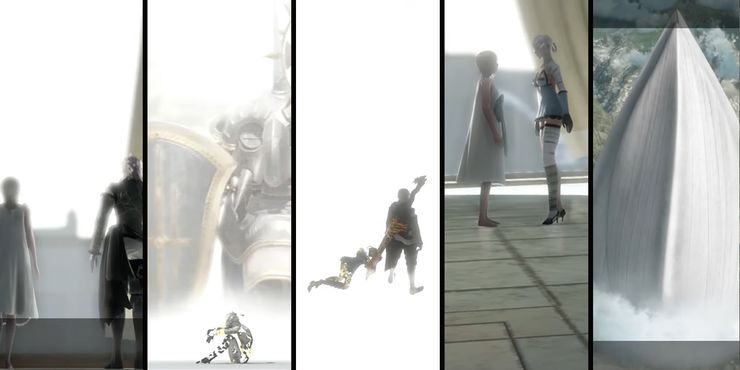
Let’s start at the end, and by that we mean let’s talk about endings. In Nier Replicant 1.22, there are five endings, with Ending E being brand new content not found in the original Nier release. And, there’s more fun to be had and content to experience with every single subsequent playthrough.
Now, to compare, the original Drakengard has five endings, Drakengard 2 only has three, Drakengard 3 goes back up to four, and Nier Automata has a whopping twenty-six (one for every letter of the alphabet).
By pointing this out, we’re of course alluding to the fact that every Yoko Taro game has at least three different possible endings. But, more than that, there’s also the fact that there are no “good” endings either. Every single ending is bittersweet in some way with at least a touch or a whole handful of nihilism.
9. Weapon Stories And Their Contribution To The Endings
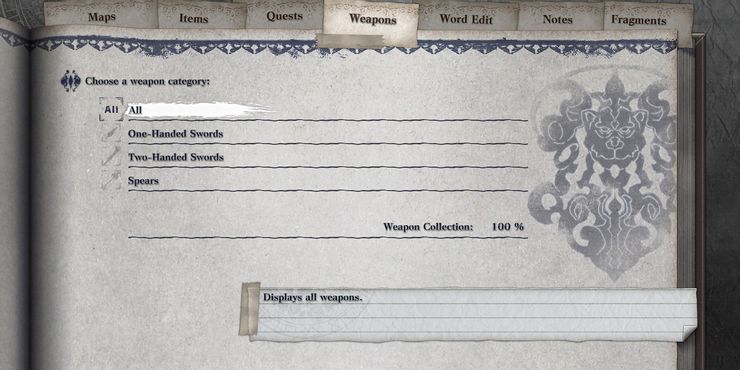
Another constant found in every single game in the Nier/Drakengard franchise is the Weapon Stories. Basically, for every new weapon you acquire in these games, there’s a neat little story tied to the weapon that will slowly reveal itself as you upgrade or level it up.
Sometimes these stories tie into specific character backstories within the game, and other times they just serve as a bit of a way to reinforce the tone. And, they almost always require you to acquire every single weapon in order to unlock one specific ending.
It happened with Ending Y in Nier Automata, the original Drakengard required players to get all 65 weapons for Ending E, and you’ll need every weapon in Nier Replicant v.122 to see Endings C through E.
8. The Absurd Amount Of Blood
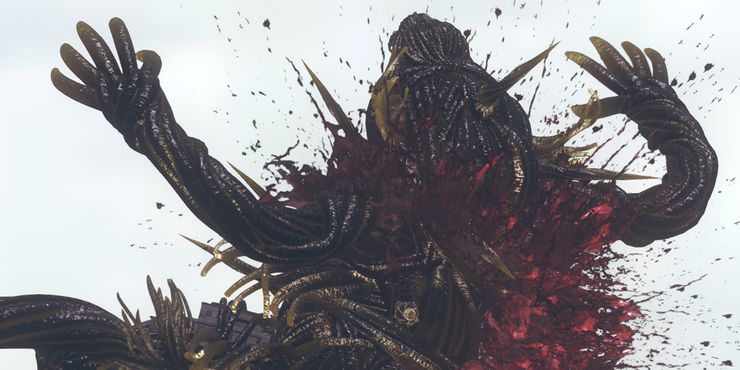
Yoko Taro games are violent, that’s just a fact. All three Drakengard games have you bombarding soldiers with dragon fire, slashing them to bits, or disintegrating them with magic. Even Nier Automata, a game about androids and cyborgs, has a lot of “blood” in it too.
Nier has always been the worst offender, simply because of how much of the crimson stuff the Shades in this game seem to splurt out. And now, in the “remaster” of Nier Replicant v1.22, that blood is much nicer looking! Just think back to when Kaine gets skewered after managing to beat Gretel, and how absurd that geyser of blood coming out of her was. Looks like there’s a lot we still don’t know about Kaine, including the gallons and gallons of blood she apparently has.
7. The Angelic Language Used For Magic

You may not know this, but Nier has a couple of languages completely unique to it. For one, there’s the gibberish language Emi Evans sings in the OST (yet it’s still somehow so powerful). Then, there’s the language the characters in Facade use, which is just garbled Japanese. And finally, there’s the Angelic (named after the dragon Angelus, not the agents of Heaven) written in the spell circles. These same symbols can be found in the magic circles of Nier Automata and the Drakengard games as well, though four specific letters are used primarily in Nier Replicant.
Fans have translated the letters, and it turns out they’re A, G, C, and T. They quickly pointed out that these are likely alluding to the four building blocks of DNA, Adenine, Cytosine, Guanine, and Thymine. It makes sense that the Black Scrawl, in particular, would be made up of these letters, considering it was a sign of the Replicant starting to break down structurally.
6. The Intertwined Relationship Between Violence & Romance

There are a lot of different ways to explore romance in a piece of media. But, for Yoko Taro, romance and violence must always go hand-in-hand. In each and every one of his games, if two characters are going to be romantic, then they’re either going to kill each other right after, or possibly during their coupling.
There are plenty of examples, from Decadus in Drakengard 3, to 2B/9S in Automata. And of course, this pops up in Nier Replicant too, specifically the scene with Kaine beating Nier to bits right after a certain someone sacrifices themselves. Yoko Taro later expressed in an interview that this is by far the most romantic scene in the game, and we agree.
5. Flowers & Lunar Tears

Boy, there sure are a lot of flowers in the Nier/Drakengard universe, huh? Of course, there’s the Flower “parasite” in Zero’s eye in Drakengard 3 that basically makes her immortal, the field of Lunar Tears in Automata, and of course the original Lunar Tier found in the beautiful Lost Shrine of Nier Replicant.
But, there are so many more flower connections than that. For example, Anemone, the leader of the Resistance Camp in Automata, was originally part of a group of Resistance fighters (seen in one of the stage plays) that includes Lily, Rose, Dahlia, Daisy, Asta, Clematis, Calmea, Sonya, Erica, and Margaret, all of which are names of flowers. And that’s maybe only half of the botanical references spread throughout these games. It’s almost laughable how many oddly vague connections to flowers these two franchises have.
4. Identical Twins That Know The Secrets Of The Universe
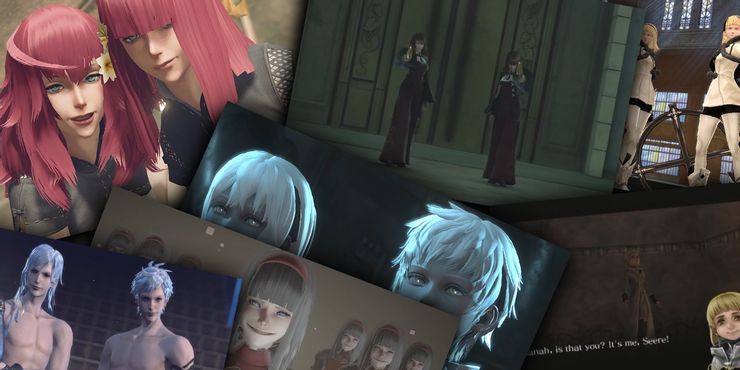
What’s the deal with twins in Yoko Taro games? There’s Manah & Seere in Drakengard, One and Brother One in Drakengard 3, the Sleeping Beauty twins in Nier Replicant, Adam and Eve from Automata, Terminal Alpha and Beta from Automata, and even Devola and Popola from both Nier Replicant and Automata. That’s a ton of twins!
Some fans have pointed out that characters dressed in red have connections to The Watchers and the Red-Eyes from Drakengard, but then what about Devola and Popola? It’s still unclear why there are so many twins of different varieties in this franchise, but it could be something as simple as Yoko Taro just likes the concept of using twins as a narrative device.
3. The Nonchalant Representation Of All Kinds Of People

This next one has to be one of the greatest aspects of the Taro games. Essentially, we want to talk about how many of Yoko Taro’s titles include characters of different genders, sexualities, or preferences without drawing an abundance of attention to them. This varies a bit, as the original Drakengard had some really awful “unique” characters, like a cannibal and a pedophile. But, as the games went on, better inclusivity was shown, especially in the original release of Nier.
To be more specific to Replicant, in particular, we’re talking about Emil’s homosexuality and how Kaine identifies as intersex. Both of these facts are 100% confirmed in-game and by Yoko Taro himself, but it’s never “suddenly brought up” in the narrative in some obvious way. Yoko Taro, for all the odd things he does, seems to be pretty on top of it when it comes to inclusivity.
2. In-Game Distance Does Not Equal Canonical Distance
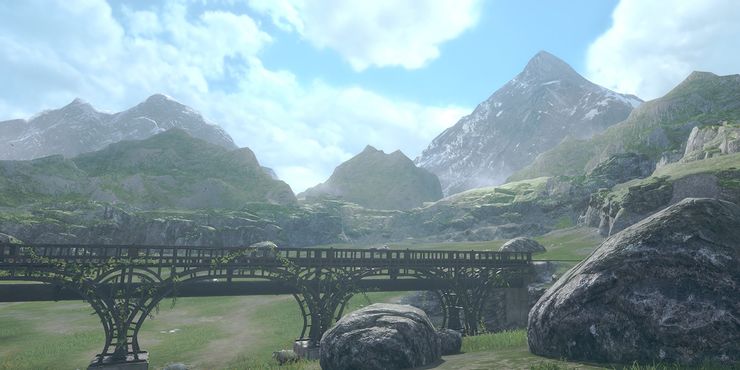
This is something that happens in games from time to time. Usually, it’s when a developer wants to make a giant expansive world, but the budget simply won’t allow for it. So, they put all the locations close together, and just say that the distance between them is canonically much greater in-universe. This happened in Dark Souls, it’s almost a given in any game that involves space travel, and it’s part of Nier Replicant as well.
In many of the short stories found in Grimoire Nier, characters talk about how far Seafront is from Nier’s Village. But, in-game, it only takes maybe a minute or two to get there.
1. The “Daredevil” Trophy & Its Similarity To The “What Are You Doing” Trophy

And lastly, let’s talk about a gross pattern between Yoko Taro games. We’re of course talking about the “What Are You Doing?” Achievement/Trophy in Nier Automata as well as the new “Daredevil” trophy in Nier Replicant v1.22. Both of these require you to try and use the camera in-game to ogle at the main female lead’s body.
We just finished talking about how well Yoko Taro does with respectful representation in his games, and then he does this. What’s the point of intentionally being subtle and respectful about Kaine’s identity if an in-game achievement is going to ruin it all?

